
Hot Spring Rime
This is the daily bite-sized Merry Blogmas 2017 science blog post for December 14. | Today’s topic is hot spring rime, not to be confused with hot Spring rhyme. The latter invokes steamy poetry about certain reproductive activities, a subject better left to cow-eyed romantics and peddlers of questionable erotic “literature.” This is G-rated blog, folks. We are just not going to go there.
THE FORMATION OF HOT SPRING RIME
What is Rime?
Rime is a type of frozen water. Here’s how it usually forms:
- A fog cloud or mist moves with a light breeze.
- If it is very cold out, then the water droplets in the fog or mist can freeze onto solid objects as they blow by in the breeze.
- The frozen droplets deposit on windward surfaces, which is to say on the surfaces facing into the wind.
- The frozen droplets are usually milky white and powdery. They look regular frost that you see on grass on cold morning.
Common Examples of Rime Ice
Some common examples include:
- Rime ice on the buildings on Mount Washington.
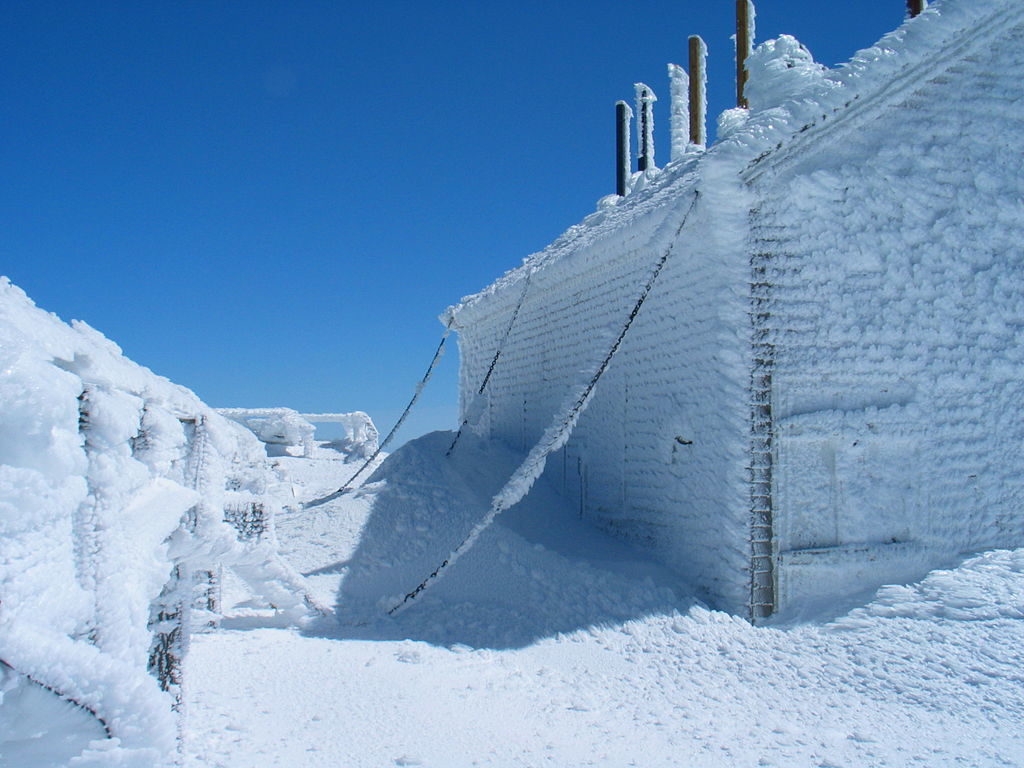
Rime ice on Mount Washington. Note the windward growth of the rime ice on the roof vent pipes and building chains. Photo by BenFrantzDale (2006), CC-BY-SA-3.0/CC BY-SA 2.5-2.0-1.0 assumed, via Wikimedia Commons (see http://bit.ly/2j1DgQ6 for details)
- Rime ice that grows on the leading edge of aircraft noses and wings.
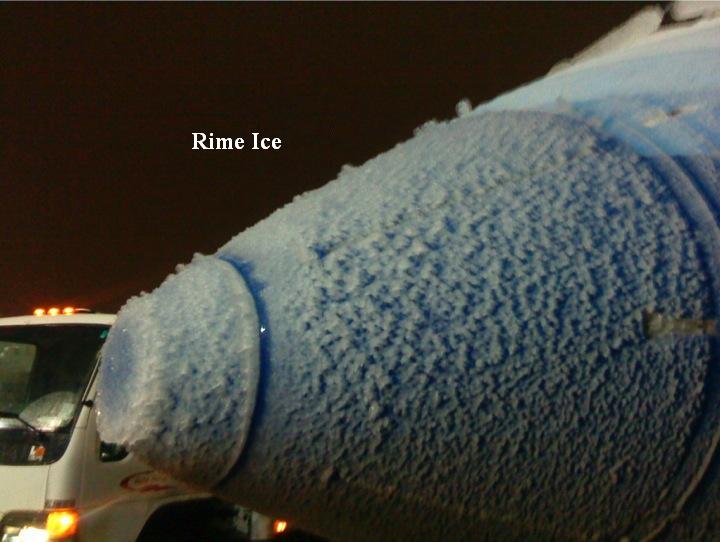
Rime-Ice Growth at Geothermal Areas
Okay, I’ll fess up here and admit that I got the idea for this post when I spotted some rime ice at Lava Hot Springs in Southeastern Idaho. It’s such a steamy subject!
Hot spring rime ice is not unusual in geothermal areas when it’s cold out. It deserves the label uncommon because there is much less geothermal rime in the world compared to other places. For example, aircraft rime ice is a daily danger for all pilots. In additions, every place that sees high-humidity weather like freezing fog, “Arctic smoke,” or Winter-time spray from waves or waterfalls sees the formation of soft rime all the time.
The reason geothermal rime ice is uncommon is because geothermal features are uncommon. If you want to see a lot of rime that formed from geothermal activity, then go to Yellowstone National Park in the Winter. Go to Mammoth Hot Springs at the north end of the park, which is the only part of the park guaranteed to stay open year-round. Enter the park there and take the boardwalk up into the hot spring terraces. You won’t be disappointed. A big upside is that there will probably be a lot of bison soaking in the hot springs there.
RIME ICE AT LAVA HOT SPRINGS
What follows here are three photos I took this morning at Lava Hot Springs.
The first photo shows one blade of a decorative shrub at the side of the hottest bathing pool. The ice has grown on the bottom and on the right side of the bladed leaf from the steam that rises upwards from the water surface.
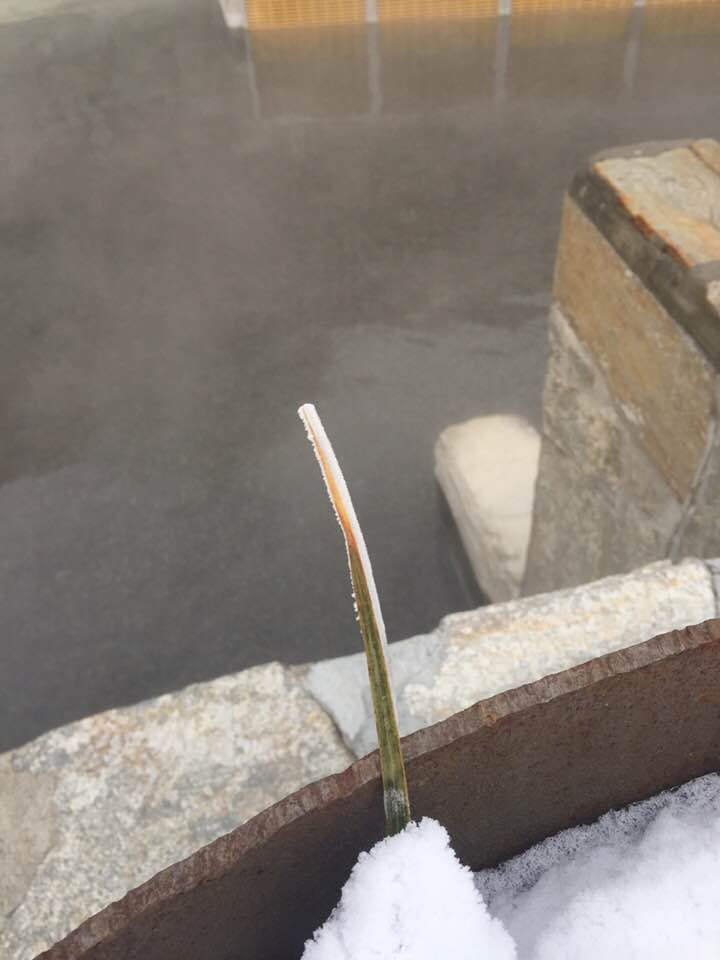
The next photo is a view of several similar leaves on a nearby shrub next to the middle bathing pool at Lava Hot Springs.
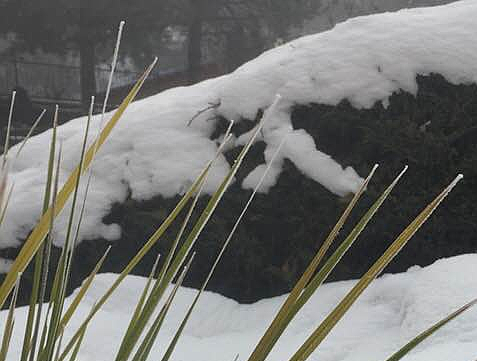
The last photo shows a bush over by the jetted whirlpools. The steam from the pools typically rises and travels over the top of the bush. The steam usually misses the bottom and back of the bush. In the photo, it travels from middle right-hand edge to the upper-left corner. You can see this from where the rime ice has deposited on the branches.
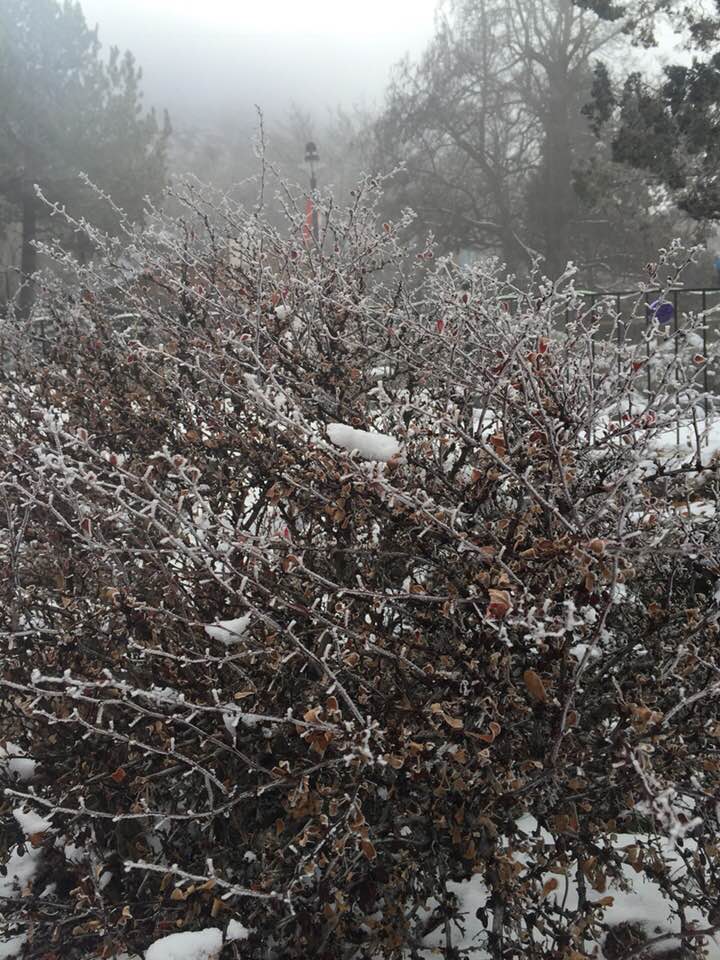

2 thoughts on “Hot Spring Rime”
I take it that a sulfur spring and other foul fumed water spots rime would be pure water ice? Salt rime also pure water not salty?
When it freezes, salt water rime is salty. I grew up 100 yards from the Atlantic Ocean. I know this first hand (kids will eat anything…)
I suspect rime from a sulfurous spring would be just water based on the chemistry of steam vs. hydrogen sulfide vapors. Salt is very soluble in water. It stays in solution in water droplets. Sulfur in insoluble in water. It really wants to be elsewhere and doesn’t want to stick around in the steam from hot springs. It’s one of the reason sulfur springs stink so bad.